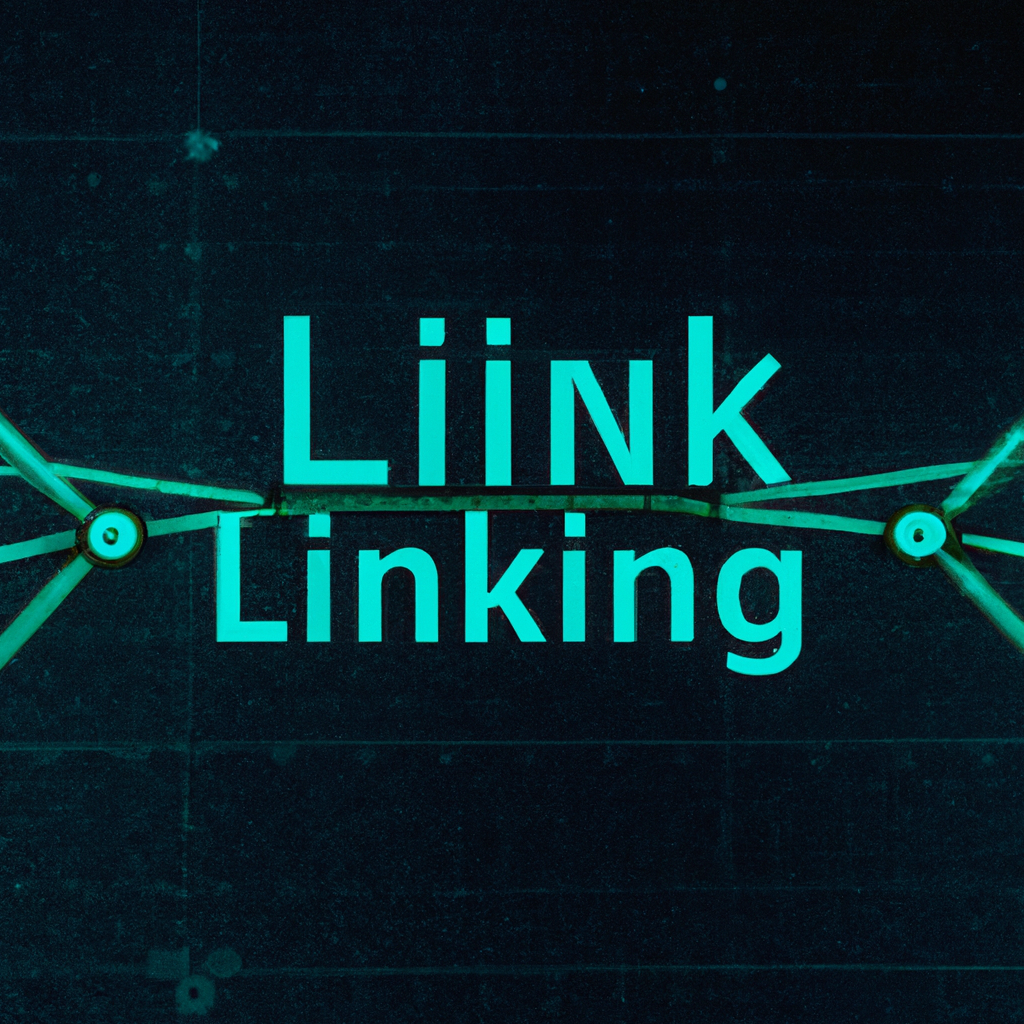What is Search Intent
Key Takeaway:
- Understanding search intent is crucial for SEO: Search intent refers to the reason behind a search query and the user’s ultimate goal. By designing your website and content to match the intent of your target audience, you can increase your chances of ranking higher in search engine results pages (SERPs).
- Google’s understanding of search intent is constantly evolving: Google’s algorithm is designed to match search queries with the most relevant content. As Google becomes better at understanding search intent, it is important to stay up-to-date with search intent trends and adjust your SEO strategy accordingly.
- Types of search intent: The four types of search intent are informational, commercial, navigational, and transactional. Understanding the different types of search intent can help you create content that satisfies the user’s needs and goals.
Understanding Search Intent and Its Importance in SEO
Understanding search intent is crucial for any successful SEO strategy. In this section, we’ll explore the basics of search intent and why it’s important for SEO. We’ll dive into the reasons why search intent matters and how understanding it can improve your website’s rankings. By the end of this section, you’ll have a better understanding of how to tailor your content to match the search intent of your audience, ultimately driving more traffic to your site.
The Basics of Search Intent
Understanding search intent is vital for SEO. It means the reason behind a user’s search query and what they hope to achieve when they type it into a search engine. Without grasping what users want, making useful content that ranks well is hard.
We can divide search intent into four categories:
- Informational intent implies a user is searching for info about a certain topic or question.
- Commercial intent involves users looking to buy or find product info.
- Navigational intent connects to users who are searching for a specific website or resource.
- Lastly, transactional intent links to users who are ready to buy.
Search engines like Google use complex algorithms to work out search intent and bring back results that match the user’s query best. Knowing how these algorithms work is essential for forming a productive SEO strategy.
To make content that meets users’ needs and gives the right results, SEO professionals have begun using semantic search optimization techniques that focus more on context than words alone. Concentrating on the semantics of language helps businesses to provide better content that satisfies their potential customers.
Why Search Intent Is Important for SEO
Search intent is fundamental in SEO. It’s vital for any SEO strategy to succeed. Know the aim of people’s search queries, then give them valuable content that relates. This will have a big effect on page ranking and clicks.
Analyze and understand the relationship between search intent and user needs. Types of searches include informational, commercial, navigational, or transactional. Tailor content to each.
Google’s algorithm favors content that fits user intent. So, an SEO strategy that agrees with Google’s view of search intent is needed for better rankings.
Search intent affects keyword research and content creation. Optimizing content for specified keywords may not be enough if it doesn’t solve the user’s ultimate goal.
An example of the significance of targeting search intent: ‘SEO Strategy Case Study’ rose from #6 to #1 in one week. The proper alignment led to higher interaction and more traffic.
Google’s Understanding of Search Intent and Its Significance
Google’s ability to understand the intent behind a search query has become increasingly important for businesses and websites looking to boost their online visibility and engagement. In this section, we will explore how Google determines search intent and the key role that search intent plays in Google’s algorithm.
How Google Determines Search Intent
Google reigns supreme when it comes to online searches! It has advanced tech to detect search intent. Natural Language Processing techniques like text matching, semantics, and context are used by Google to learn what users want. All this analysis categorizes user intent as informational, commercial, navigational, or transactional.
Plus, Google uses machine learning algorithms and data collection to understand similar queries. It looks at past search behavior to provide tailored results that satisfy users’ needs. It also takes into account users’ location and device preferences to deliver personalized results. This leads to higher click-through and conversion rates.
Knowing how Google determines search intent is key for marketers and website owners. They can create content that matches users’ needs and intent by doing keyword research and analyzing past searches. This can lead to a huge boost in organic traffic, making it a major part of any digital marketing strategy.
The Role of Search Intent in Google’s Algorithm
Search intent is super important for Google’s algorithm. It influences a website’s page ranking. Google’s algorithms prioritize info that fits the user’s search intent – much more than just matching keywords. By understanding why someone searches, Google can give a more personalized experience and better results.
To figure out search intent, Google looks at the user’s location, device, previous searches, and more. This helps Google understand what the user wants and give them relevant results.
Making sure your content meets search intent is part of SEO strategy. If your content fits what users want, it can get you higher rankings on Google. Matching search intent means creating info content to answer questions about a topic, or commercial content to promote products or services.
In short, knowing the role of search intent in Google’s algorithm lets you make content that meets user needs, which boosts page ranking.
The True Meaning of Search Intent and its Effect on Page Ranking
Search intent plays a crucial role in determining your webpage’s rank on a search engine results page. In this section, we dive into the true meaning of search intent and how it impacts your page ranking. Specifically, we explore the relationship between search intent and user needs, as well as how search intent affects keyword research. By understanding these crucial elements, you can develop a more effective search engine optimization strategy and bring your webpage to the top of the search results.
The Relationship Between Search Intent and User Needs
Search intent is the link between the purpose behind a user’s search query and their needs. It is fundamental for SEO as it helps search engines like Google understand what users want and offer the most relevant content. This impacts the website ranking in search results.
To get a grip on the relationship between search intent and user needs, experts must identify what information or solution the users seek when performing a search. Analyzing data like click-through rates and bounce rates can give insights about what users really look for. This can guide content creation strategies.
Search intent also influences keyword research. Marketers need to pinpoint the keywords that will draw traffic and conversions. For example, if the focus is on getting traffic, then informational keywords would do the job, while commercial or transactional keywords would be better for driving leads and sales.
The relationship between search intent and user needs is special since it requires knowing human behavior and psychology. Optimizing web pages only with technical factors like HTML tags and page structure is not enough. To create content that meets users’ needs, experts must understand why people search for certain things online.
In conclusion, search intent and user needs are vital for SEO. By making content that fits the intent of users’ searches, websites can boost their rankings, drive more traffic and ultimately increase conversions. Therefore, guessing keywords is like playing Clue as keywords chosen without considering search intent will be useless.
How Search Intent Affects Keyword Research
Keyword research is vital for a successful SEO strategy. To get higher SERPs rankings, it’s important to understand how search intent affects keyword research. Analyzing search intent helps businesses create content that their audience likes. This leads to more engagement and conversion rates.
Search intent affects keyword research. Traditional keyword research only looks at industry-specific words. To compete, businesses should use niche keywords that match user searches better than generic queries.
Businesses need to stay updated on how search algorithms affect SERPs. To optimize content and get higher rankings, it’s important to structure web content for user’s specific needs and purpose of each query. This creates exceptional engagement rates and better SEO results.
Types of Search Intent: Informational, Commercial, Navigational, Transactional
When we interact with a search engine, we’re often driven by a specific search intent – whether that’s to gain information, make a transaction, find a specific website or explore commercial opportunities. In this section, we’ll take a closer look at the different search intent types that exist – from informational and navigational, to commercial and transactional.
Informational Search Intent
Informational search intent is a type of query that users make when they want to gain knowledge or info about a topic. It can be about anything from general knowledge and how-tos to definitions, guides, and opinions.
When conducting an informational search, users expect unbiased results. For example, if someone searches “how to cook pasta,” they want educational resources about cooking pasta. To optimize content for informational search intent, create articles, tutorials, FAQs, expert opinions, and answer queries accurately.
The goal of informational content is to solve the user’s problem, not merely give information. Therefore, to make successful content strategies, it’s important to understand search intent. This includes researching relevant keywords. If you want to sell products or services, make sure to understand commercial search intent and how to attract customers.
Commercial Search Intent
Commercial search intent is a must for online buying. Customers with this intent are looking to purchase something online. Keywords related to products/brands, comparisons, deals and discounts are included in these searches.
These searches have higher conversion rates and lower bounce rates. To target customers, businesses use effective landing pages. Analyzing the keywords and contextual factors (location, device, history, social media behaviour) help understand customers’ needs.
Long ago, Google’s algorithm didn’t recognize commercial search intent. Marketers used SEO tactics like keyword stuffing and link building. With Google Panda and other updates, marketers now realize user experience and providing valuable content is key for better rankings.
Navigational Search Intent
Navigational Search Intent means users have a set aim to find a specific website or webpage. For example, if someone needs an online store, they would type in the brand name in the search engine, not ‘online shopping’, as they already know what they are looking for.
Navigation Intent is handy when people don’t remember the exact URL or when they are searching for well-known brands. People do navigational searches to save time and make life simpler. This way, they can go straight to familiar websites without spending too much effort on browsing through different menus/pages.
Navigational Intent searches show how familiar users are with a brand. This highlights the significance of having a strong brand reputation. Websites that have established their branded searches will see direct benefits, getting more appropriate traffic from search engines.
Transactional Search Intent
Transactional search intent is essential for online shopping. It means the user has a specific purpose – to purchase or complete a transaction. This search intent is vital for businesses, as it indicates the user is ready to buy.
Businesses need content that will drive sales and conversions. They should create tailored pages with product-specific keywords, add clear calls-to-action and offer incentives.
Remember, transactional search intent is only one of many types. Businesses can rank higher in organic search results by understanding these types and optimizing their strategies.
Studies show targeting queries based on user’s actions boosts conversion rates and reduces bounce rates. Transactional search intent is key for businesses to generate more revenue online.
The Importance of Satisfying Search Intent for SEO and Content Marketing
Search intent is the driving force behind successful SEO and content marketing strategies. To achieve higher rankings on search engine result pages and create engaging content, understanding and satisfying search intent is essential. In this section, we’ll explore the significance of search intent and how it impacts content creation. We’ll also dive into the crucial role that search intent plays in developing an effective SEO strategy, backed by data and insights from leading experts in the industry.
How Search Intent Impacts Content Creation
Creating content requires knowledge of how search intent impacts it. Search intent is the goal behind a user’s search. Content creators must make their work cater to meeting users’ requirements. This will lead to a better page ranking and more successful content.
It is essential to distinguish the different search intents: informational, commercial, navigational, and transactional. Every type of search intent conveys a specific purpose or query that users are searching for. Knowing which category the user’s search falls under can help in constructing suitable content that matches their needs.
Writing for informational queries requires content that answers common questions on a topic. For commercial searches, the primary target is to give information that persuades customers to buy the product. Navigational searches need concise info through titles and link descriptions to make sure your website is easy to find. Lastly, transactional searches are service-specific inquiries that require keywords designed around sales, such as discounts or special incentives for new customers.
A great example of this is a case study. A company focused on both navigational and transactional queries by analyzing user behavior patterns and optimizing its sales pages to fit user demand. This led to them moving from #6 to #1 in one week. Understanding how search intent affects content creation is necessary to craft useful content that meets users’ needs.
The Role of Search Intent in Developing an SEO Strategy
When it comes to SEO success, understanding search intent is key. Analyzing users’ intent enables businesses to create content that meets their audience’s needs and boosts SERPs ranking.
To craft a good SEO framework, marketers must know the different types of intent:
- Informational
- Commercial
- Navigational
- Transactional
This helps with keyword research, content optimization and linking strategies. It’s not only about keywords, but also understanding what questions users ask when searching. SEO-friendly content that answers questions and provides industry solutions increases chances of ranking well.
A case study shows how, through Semantic NLP and user segmentation, an SEO strategy went from #6 to #1 in a week. This way, businesses can personalize user engagement and offer great value to customers.
Google’s Quality Rater Guidelines and “How Search Intent Is Redefining the Marketing Funnel”
Google’s Quality Rater Guidelines shed light on how search intent is redefining the marketing funnel. In this section, we’ll explore the significance of search intent as per Google’s Quality Rater Guidelines and how it’s changing the marketing funnel.
The Significance of Search Intent in Google’s Quality Rater Guidelines
Optimizing content for search engines is essential. Google Quality Rater Guidelines focus on user needs and how they affect rankings.
Marketers must understand search intent. Google looks at keywords, synonyms, context and user location.
Satisfying search intent is not enough. Content must pass Google’s E-A-T guidelines and be trustworthy. Quality assessment is central, even with many updates.
How Search Intent Is Changing the Marketing Funnel
Search intent is key for SEO & content success. Google understands search intent & how it influences user behavior. Marketers can use this knowledge to create strategies that connect with users & drive conversions.
Search intent reshapes the marketing funnel. It shows how users interact with content in the buyer’s journey. Marketers can use this to generate strategies that fit user needs & help conversions. They must also be aware of how different search intents link & inform content & strategy.
It’s vital marketers stay informed on search intent trends. This way they can craft content that drives conversions & builds customer relationships. To wrap up, understanding search intent is vital for any successful SEO or content strategy. Marketers should create content that connects with users & helps conversions.
.
Case Study: SEO Strategy Case Study from #6 to #1 in One Week
In this case study, we’ll dive into an SEO strategy that successfully propelled a website from the sixth to the top spot in just one week. We’ll take a closer look at the importance of search intent in driving this success and analyze the strategies that were used specifically to satisfy search intent for this site.
The Importance of Search Intent in the Case Study
Search intent is essential for a successful SEO plan. In this case, meeting search intent was essential for the desired outcomes. To explain, creating content that matched users’ queries was necessary to improve the website’s ranking. Focusing on info that precisely addressed what users searched for, we could ensure the website was providing valuable and pertinent content, thus enhancing its authority in search engines.
Noting that understanding search intent goes beyond including keywords is key. Instead, it needs an in-depth analysis of user behavior to recognize which content would be most useful. This method not just increases website visibility but also ensures long-term success by keeping users involved and pleased.
To sum up, prioritizing user intent and crafting content accordingly is fundamental to creating an effective SEO plan. Meeting those needs not only boosts page ranking but also builds trust with potential customers, finally resulting in increased ROI and conversions. The importance of search intent in the case study is clear and the tactics used to achieve it should be considered.
The Strategies Used to Satisfy Search Intent in the Case Study
For success in the case study, it was vital to please search intent through specific strategies. The table shows the different strategies used plus their descriptions.
| Type | Description |
|---|---|
| Informational Content Strategy | Making informative content that directly responds to user intent. |
| User Experience and Site Speed Optimization Strategy | Speeding up the website and improving user experience through readability, page speed, and other measures. |
| Keyword Selection Strategy | Finding competitor keywords and optimizing with long-tail keywords and related phrases. |
It’s awesome how these strategies can make content that addresses user intent while also making navigation easier. Knowing what your audience wants is the key to Google success.
The Impact of Search Intent on Page Ranking and Content Strategy
Search intent is crucial to understanding how search engines evaluate web pages and content. In this section, we will explore the impact of search intent on page ranking and content strategy, as well as the strategies you can implement to ensure your content meets and satisfies users’ search intent. Learn how search intent can influence your page ranking and how developing content to align with users’ intentions can improve your website’s visibility and success.
How Search Intent Affects Page Ranking
SEO is essential for online success. Search engines prioritize user intent when delivering results. To rank higher, businesses must create content that meets search intent. Quality content that is engaging, informative, and relevant has a better chance of ranking higher. A case study shows how optimizing content with the right keywords and value can lead to website growth. Pages with no focus are less likely to rank highly.
To sum up, understanding search intent is key to effective SEO strategies. High-quality content that provides value to users will help businesses rank higher in SERPs, driving traffic and improving their online presence.
Strategies for Developing Content to Satisfy Search Intent
Creating content that meets user search intent is vital for successful SEO. To do this, there are different approaches, such as studying user behavior and researching keywords. This can provide an idea of what topics are attractive to users and which phrases they might use when searching.
This data can be used to create content that meets user search intent. For example, informational queries might require informative articles or product listings. Commercial queries might require engaging videos or interactive resources. The secret to success here is understanding the nuances of different types of search intent and crafting content accordingly.
At the same time, it is essential to avoid “keyword stuffing” when creating content for search intent. Repeating keywords without context can result in penalties from Google’s algorithm. Instead, writers should focus on creating original and insightful content that engages users and gives them what they need.
There are multiple strategies for developing content for search intent, but no one-size-fits-all solution. Writers must remain aware of changes in the SEO world and adjust accordingly. Doing this will help website owners get organic traffic from users seeking out relevant info.
An SEMrush study showed that pages ranking 1-3 on SERPs had a readability score lower than a 9th-grade education level. Therefore, content for search intent should be easy to read and understand.
Conclusion: The Continued Importance of Search Intent in SEO and Content Creation
As we wrap up our discussion on the significance of search intent in SEO and content creation, let’s take a closer look at the future of this critical factor and how staying up-to-date with search intent trends is crucial for success. With the ever-evolving landscape of search and user behavior, understanding the role of search intent is vital for content creators and marketers alike. The continued emphasis on search intent highlights the importance of crafting content that meets the needs of users, ultimately driving engagement and conversions.
The Future of Search Intent and Its Role in SEO
Search intent and its impact on SEO is growing. Search engines like Google prioritize user satisfaction by giving results which fit the search query. With AI and machine learning, search engines are getting better at understanding users’ queries and giving relevant answers. Companies must create content that matches all types of search intent – informational, transactional etc. – to be seen in search rankings.
Algorithms will likely place more emphasis on delivering user-friendly results. Companies must stay up-to-date with trends and techniques for different search queries. This could include making multimedia content, improving website UX design or adding voice-activated search options.
For informational searches, creating comprehensive guides or tutorials may help. Commercial searches are best targeted through paid ads and product listings. For transactional searches, optimized landing pages and easy checkout processes are key.
Businesses need a customer-focused approach to succeed in SEO. Understand user intent and create strategies around them for organic traffic and a good user experience.
The Importance of Staying Up-to-Date with Search Intent Trends
Search Intent Trends are key to SEO and content creation. Companies must keep up with these trends to make sure their content suits users’ needs. As search algorithms understand user intent better, understanding changes in these trends is essential.
Monitoring shifts in search algorithms and user behavior is vital to stay current with Search Intent Trends. Google’s algorithm can now understand natural language queries, so understanding user intent is more important. Therefore, Search Intent has become a central part of SEO strategies, and neglecting changes can hurt a company’s online presence.
Regularly updating your content strategy according to changes in user behavior helps your content remain relevant and targeted. This leads to high-quality website traffic and better conversion rates.
Google’s BERT update is an example of the importance of staying informed. Companies that adjusted their strategies to the changes saw improvements in their search rankings, while those that ignored them had difficulty staying visible. To build a strong online presence, it’s important to stay up-to-date with Search Intent Trends.
Some Facts About What is Search Intent:
- ✅ Search intent refers to the main purpose a person has in mind when conducting an online search. (Source: Neil Patel)
- ✅ Understanding search intent is important in SEO because it can impact your ability to rank in search results. (Source: SEMrush)
- ✅ Search Intent is ultimately Google’s #1 goal. (Source: Backlinko)
- ✅ Google offers suggestions to meet the searcher’s needs based on search intent. (Source: Neil Patel)
- ✅ To rank in Google, you must make sure your pages satisfy the search intent behind the keywords they’re targeting. (Source: SEMrush)
FAQs about What Is Search Intent
What is search intent?
Search intent refers to the main purpose a person has in mind when conducting an online search.
Why is understanding search intent important for SEO?
Understanding search intent is important for SEO because it can impact your ability to rank in search results. Google now puts more emphasis on content relevance, and if your page doesn’t satisfy the search intent behind the keyword, it won’t rank.
What are the common types of search intent?
The common types of search intent include informational, commercial, navigational, and transactional.
How can understanding search intent improve my ranking?
Understanding search intent can help you have a more effective content strategy, create relevant content, and rank higher in search results. By making sure your pages satisfy the search intent behind the keywords they’re targeting, your pages are more likely to rank higher.
What is the difference between search intent and regular keywords?
Keywords are the terms people use to search, while search intent refers to the main goal or reason a user has when typing a query into a search engine. Search intent gives an idea of the “why” behind a search query, and it encloses what the person expects to find among results pages.
What is an example of how satisfying search intent can impact ranking?
In a case study called “SEO Strategy Case Study: From #6 to #1 In One Week,” Google ranked a page higher in the results based largely on satisfying search intent.







